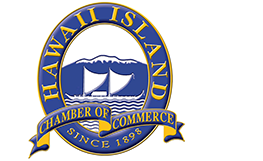Expanding diversity in STEM fields
The University of Hawai‘i at Hilo will be hosting a conference this month, bringing together campuses from Hawai‘i and the Pacific region who are working together to encourage Native Hawaiian and Pacific Island students to pursue careers in science, technology, engineering and math, commonly called STEM.
The Islands of Opportunity Alliance (IOA) is led by the Office of the Chancellor at UH Hilo and is funded by the National Science Foundation (NSF). Partner institutions are both four-year universities and two-year community colleges in Hawai‘i, American Samoa, Guam, Palau, the Federated States of Micronesia, the Marshall Islands, and the Northern Mariana Islands.
Since its start in 2006, the alliance has developed within the Louis Stokes Alliances for Minority Participation (LSAMP) program, which was launched by the NSF in 1991 with a mission to encourage and facilitate access to careers in STEM fields for underrepresented populations. In the Pacific Region, the biggest demographics for underrepresented minorities are Native Hawaiians and other Pacific Islanders. The program is particularly aimed at encouraging the students in two-year community college programs to continue their education at four-year universities.
UH Hilo is proud to be the lead campus in this important program that brings opportunities to students across the state and the Pacific region.
Conference: “Bridging Generations”
The alliance meets annually, July 24-26 this year with the theme “Bridging Generations.” The name is inspired by a story authored by one of our students, Bethany Okamoto, an anthropology major who is the first second-generation Keaholoa STEM Scholar and is following in the footsteps of her mother, Michelle Correia, who was in the Keaholoa program 20 years ago. UH Hilo’s Keaholoa program was established in 2002 with the intent to infuse Hawaiian cultural values into teaching and learning the sciences, a new paradigm for STEM education 20-plus years ago.
Each campus in the Islands of Opportunity Alliance has a thriving STEM learning community. Most are rooted in Indigenous names and values, several recently launched while others have deep roots beyond the alliance. Coordinators at each learning community do all they can to give students a sense of belonging in the STEM fields, and help coordinate research experiences with faculty or professionals in STEM. Activities to foster a sense of belonging include discussions, workshops, guest speakers, excursions, and field trips. At UH Hilo, that means students ground their work in this place and realize that their identity as Native Hawaiian or Pacific Islander is an important asset in their scientific study.
The STEM communities at each campus organized the attendance and conference presentations for the upcoming annual gathering. The research projects across the alliance are in data analytics, biology, marine science and ecology, engineering, ancestral knowledge, geology, and chemistry. While here, the students will also huakaʻi (take field trips) to Pu‘u Huluhulu cinder cone and Waiuli fishpond.
Excellent outcomes
The overarching aim of the alliance is to improve persistence and graduate rates of Native Hawaiian and Pacific Islander students, and to strengthen their successful entry into STEM careers. The outcomes of the program are looking very good.
Evaluation data for the first five years of the program show the second-year persistence rate for IOA students in 2018-2019 and 2019-2020 at 100 percent and 97 percent, respectively. For comparison, the persistence rate reported by the 2022 National Clearinghouse Persistence and Retention Report for Native Hawaiians and Pacific Islanders who initially enrolled in fall of 2020 was 65.8 percent.
The five-year graduation rate of 2018-2019 to 2022-2023 for the 21 students seeking a bachelor’s degree and who initially enrolled in college during 2018-2019 was 71.4 percent, significantly higher than the overall campus rates.
Scientists of the future
I’m excited about how well the students of the Islands of Opportunity Alliance are doing! I’m looking forward to learning about their research projects and the wealth of information they are sharing with their homeland communities. These are the scientists of the future who will be well prepared upon graduation to continue their STEM education (and research!) or return home to enter the workforce with their new knowledge and skills.
I mua!
Bonnie Irwin


Recent Comments